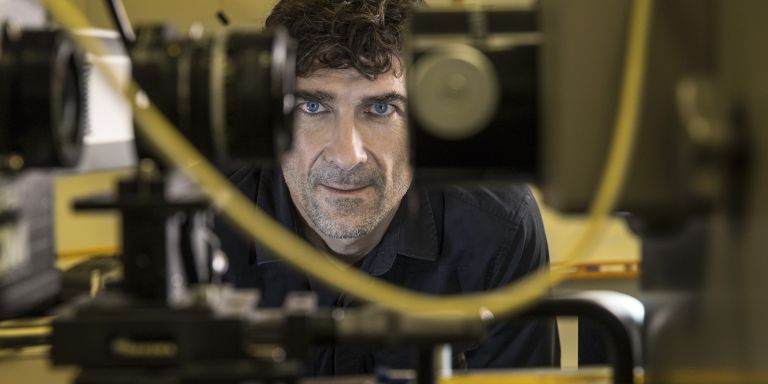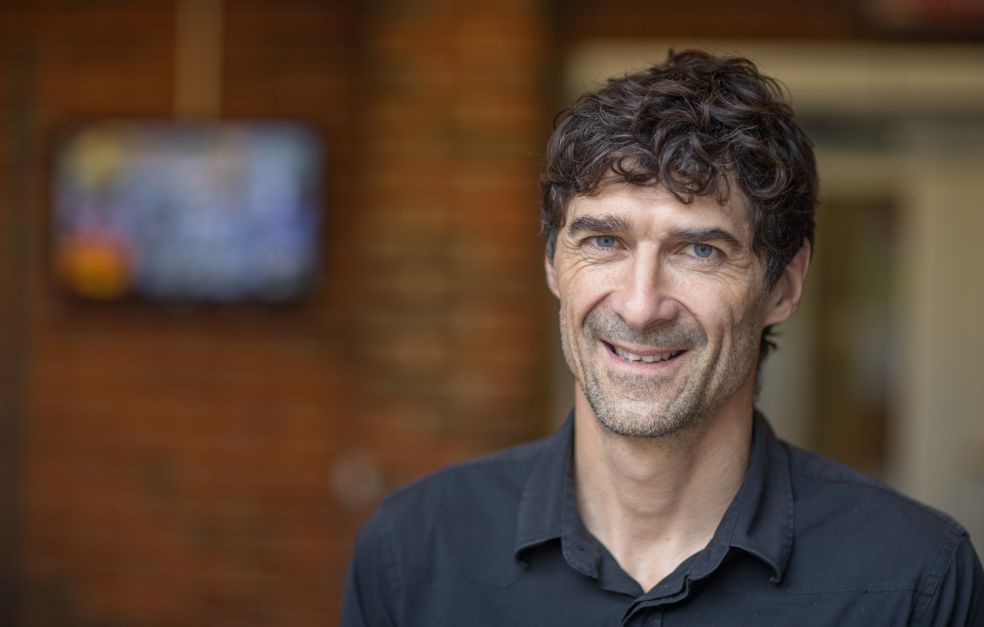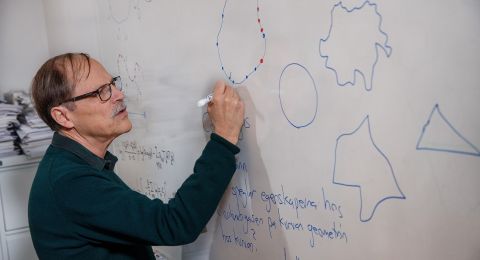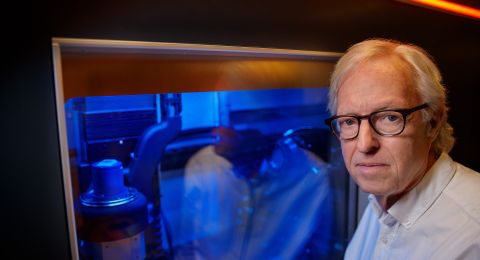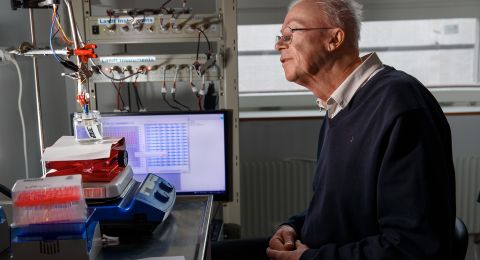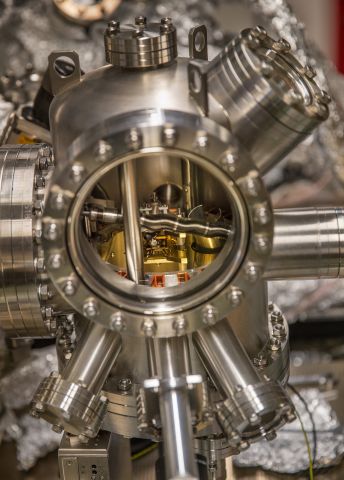
Project Grant 2016
Nanothermodynamics for optoelectronic semiconductor devices
Principal investigator:
Heiner Linke, Professor of Nanophysics
Grant in SEK:Co-investigators:
Andreas Wacker
Claes Thelander
Lars Samuelson
Magnus Borgström
Martin Leijnse
Mats-Erik Pistol
Peter Samuelsson
Stephanie Reimann
Tönu Pullerits
Institution:
Lund University
SEK 47.5 million over five years
Heiner Linke, a professor at Lund University’s Division of Solid State Physics, has a toy on his bookshelf. It looks a little like a four-legged metal spider. He uses it to explain the concept of molecular motors. The toy fits in the palm of his hand, and when he winds it up it bounces randomly back and forth on its metal legs. If it is left alone on a table top it goes nowhere. But things change if someone puts their hands on either side of the toy, so it has fewer directions to choose between.
“If you stop it from going in the ‘wrong’ direction, it will, on average, move the right way. This is what molecular motors do when they drive processes in living cells. Because they are so small, random heat movement comes free of charge, something they can take advantage of,” Linke explains.
He heads a research team in a project funded by the Knut and Alice Wallenberg Foundation. The project aims to copy the method used by molecular motors, and use it in another context – solar cells.
Ultimately, the team hopes to find a completely new and much more efficient way of using solar energy to generate electricity. But new technology and new theories will be needed. This is because molecular motors work quite differently from man-made motors.
More electricity from electron heat
“Internal combustion engines use chemical energy to create movement. And that is something they have in common with molecular motors. But combustion engines create temperatures much higher than in the surroundings, and use it to create movement. Molecular motors can’t do that. They have other ways instead, different than anything we have created, that work better at the molecular level than the most finely tuned automobile engines.”
Solar cell technology is on the same small scale as in molecular motors. Linke and his colleagues therefore hope to borrow ideas from molecular motors.
Researchers in Lund already have many years’ experience of developing more efficient solar cells using nanotechnology. They are building nanowires that work as tiny antennas capturing the sun’s rays and setting electrons in motion, generating electricity as they do so. But not all electrons absorb the same amount of energy. Some of them receive too much, and then only some of the energy is converted into electricity. The surplus creates heat. It is this extra energy that the researchers want to put to use.
“Our nanowire solar cells are already based on a fairly small number of electrons. If we could make the systems even smaller, so these energy fluctuations in the electrons were much greater, it might be possible to take advantage of the heat movement – in ways we haven’t thought of yet.”
Success may yield much more efficient solar cells in which more of the incoming energy is converted into electricity.
New theory, materials and technology
Linke has devoted his entire research career to electron phenomena in semiconductors. His doctoral thesis, written 20 years ago, dealt with phenomena that he guessed might have applications sometime in the future, when electronics had become sufficiently miniaturized. As he points out, that day has arrived. And other laws of physics start to come into play when the smallest electronic components are so tiny they are only a few layers of atoms apart. This imposes new limitations and offers new potential.
Linke has always been fascinated by molecular motors, even though they fall outside his own field of research. Over the past 20 years he has seen theories of thermodynamics evolve to describe the processes at work in an internal combustion engine, as well as those acting in a molecular motor. Now he thinks it is time for something similar in optoelectronics, the field in which he and his colleagues are researching.
“We need theoretical tools to describe the entire process. That’s why one-third of our project is theory,” Linke comments.
The ten researchers in the project will also be experimenting with materials and nanotechnologies as they attempt to create constructions in which electrons and energy transfer can be controlled in new ways. To know whether or not they have succeeded, they will also need to develop new measurement methods.
But what they need most of all, is even more ideas. Linke explains:
“We have sound premises to work from and good conditions, so there’s no doubt we can do loads of exciting physics. But if we are to succeed with a completely new concept – an as yet unknown way of converting energy – we will need renewed impetus during the course of the project. Instead of demanding that we plan our project month by month right from the outset, the Foundation wanted to fund investigation of a fundamental question. Their approach is really praiseworthy. It’s great to be able to work in this way.”
Text Lisa Kirsebom
Translation Maxwell Arding
Photo Magnus Bergström
